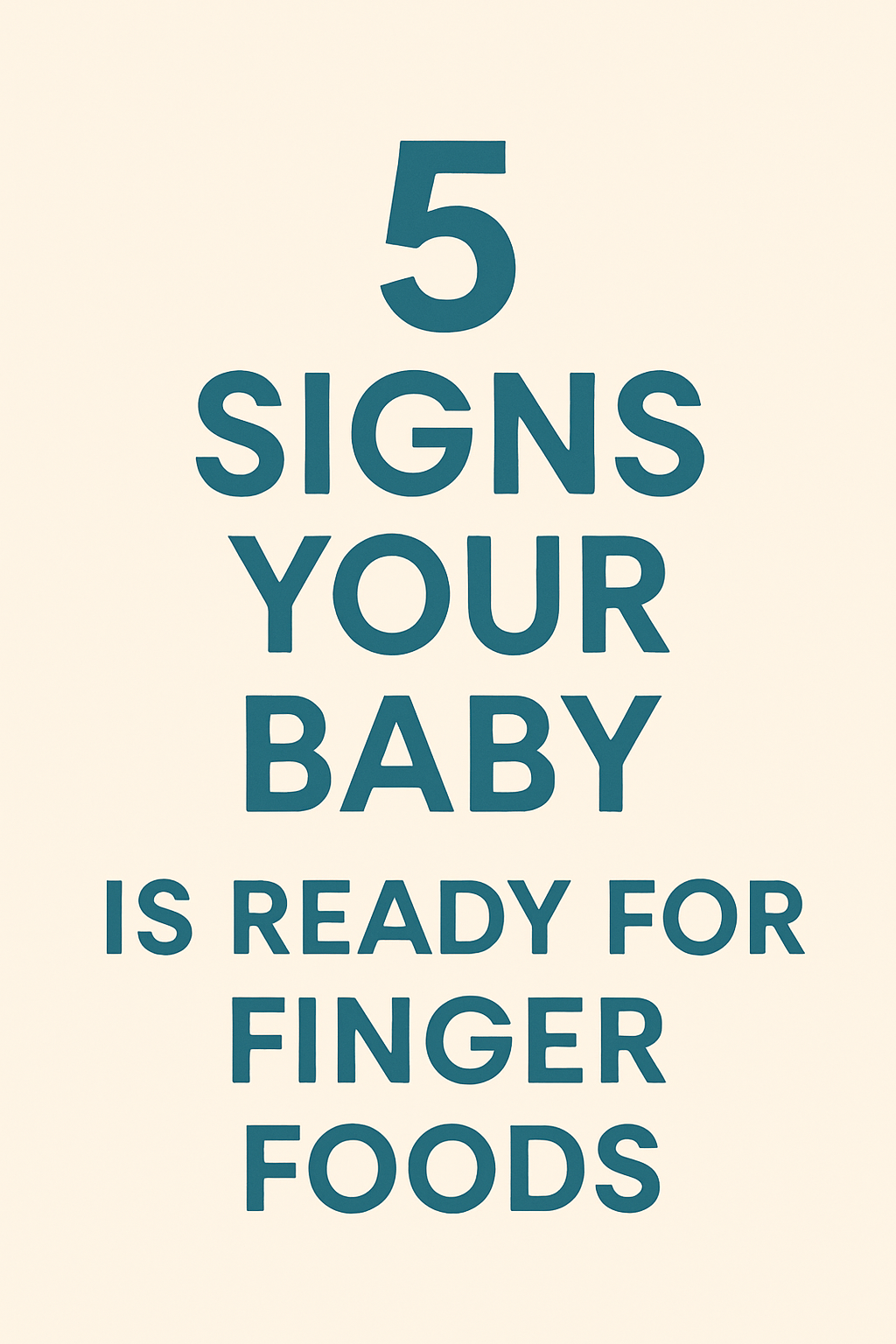
Introduction:
You’ve mastered milk feeds and maybe even purees—but now you're wondering:
Is my baby ready to try real pieces of food?
That magical milestone of moving to finger foods can be exciting (and a little nerve-wracking). But babies do give clear signals when they're developmentally ready.
Let’s explore five key signs that say it’s time to serve up those soft banana chunks or veggie sticks—and how to do it safely.
🍼 What Are Finger Foods?
Finger foods are small, soft, and safe pieces of food that babies can hold, explore, and eat by themselves. This is an important step in building independence, coordination, and interest in a variety of textures and flavors.
✅ 1. Your Baby Can Sit Up Unassisted
|
Why it matters: |
Sitting upright reduces choking risk and supports safe swallowing. |
|
What to look for: |
Baby can sit steadily without slumping, either on the floor or high chair for several mins. |
“At around 6.5 months, my baby could sit up without support. That’s when we slowly started offering mashed sweet potato chunks. He loved squishing it in his fist!”
✅ 2. Shows Interest in What You're Eating
|
Why it matters: |
Curiosity and mimicking are big signs of readiness. |
|
What to look for: |
Baby watches you eat, reaches for your plate, or tries to grab food from your hand. |
Babies learn by watching. If yours is making a move for your sandwich, they’re telling you it’s time to share—safely, of course!
✅ 3. Loss of Tongue-Thrust Reflex
|
Why it matters: |
Tongue-thrust reflex pushes food out automatically to prevent choking in newborns. |
|
What to look for: |
Baby accepts food in their mouth instead of spitting it out every time. |
Test with a spoon: if baby doesn’t push it out with their tongue, their reflex has faded—this is a green flag!
✅ 4. Can Grasp and Hold Objects
|
Why it matters: |
Self-feeding requires basic motor skills to grab, hold, and bring food to mouth. |
|
What to look for: |
Baby uses a raking motion or starts developing a pincer grasp (thumb + finger). |
Start with foods they can grab easily like steamed carrot sticks or toast fingers—skip slippery textures at first!
✅ 5. Ability to Chew (Even Without Teeth!)
|
Why it matters: |
Babies use gums to mash soft foods. Chewing motions show they’re ready for texture. |
|
What to look for: |
Baby mimics chewing when watching you eat or handles mashed food without gagging often. |
Remember, teeth are helpful—but not necessary. Many babies enjoy finger foods before their first tooth appears!
🧀 Safe First Finger Foods Chart
|
Food |
How to Prepare |
|
Banana |
Cut into long, thick strips |
|
Steamed sweet potato |
Soft, wedge-shaped pieces |
|
Avocado |
Ripe and sliced (leave skin on one side to grip) |
|
Egg (hard boiled) |
Sliced or cut into quarters |
|
Soft toast with ghee |
No edges, cut into finger-sized pieces |
|
Rice sticks (overcooked) |
Soft, clumpy, and easy to hold |
❌ Foods to Avoid at This Stage
|
Unsafe Foods |
Why to Avoid |
|
Nuts, seeds |
Choking hazard |
|
Raw carrots or apple chunks |
Too hard |
|
Popcorn, chips |
Sharp edges, risk of inhalation |
|
Whole grapes, cherry tomatoes |
Slippery and round—choking risk |
|
Sticky foods (e.g., peanut butter spoonfuls) |
Can block airway |
💡 Bonus Tips for Introducing Finger Foods
-
Serve one new food at a time
-
Always supervise (no walking or playing while eating)
-
Let them play—sensory exploration matters!
-
Don't stress about mess or quantity. Exploration > nutrition at this stage
-
Water in a sippy cup during meals helps learn sipping
🧠 Pediatric Nutritionist Says:
“The goal with finger foods is not just eating—it’s about motor development, taste learning, and mealtime joy. Let your baby guide the pace, and keep things relaxed.”
🌟 Final Takeaway:
If your baby is showing these 5 signs, it's the perfect time to introduce finger foods!
You don’t need to wait for teeth or ditch purees completely—combining textures keeps things fun and flexible.
And remember: every baby is different. Some take to finger foods right away, while others need a little more time. Follow their cues, offer variety, and celebrate the tiny, messy victories.

